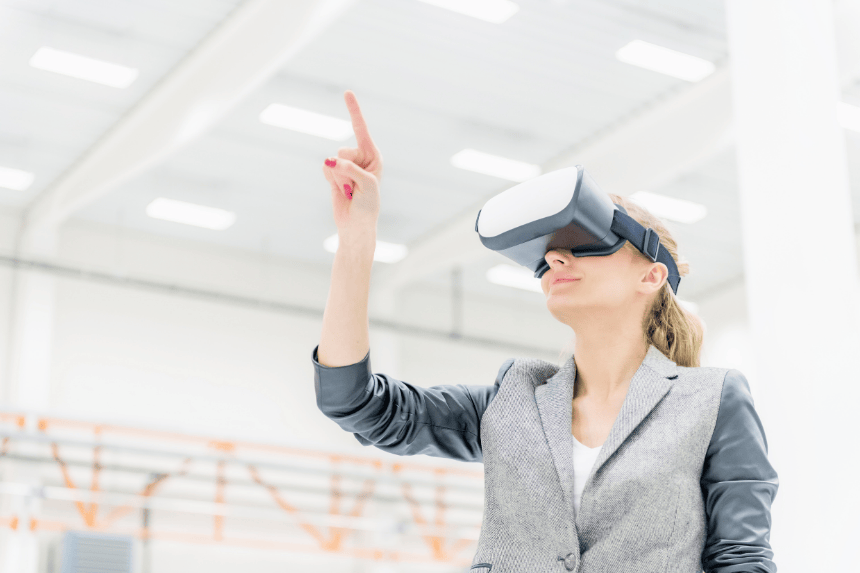
Employee training is often disconnected from on-the-job performance expectations. This article explains what strategies L&D teams can use to maximize knowledge acquisition, practice, and application to bridge that gap.
Why Should L&D Teams Shift the Focus from Training to Purpose and Performance?
Today’s business environment is moving at such a pace that the most important skill for employers to develop in their workforce is the ability to learn in the flow of work and find ways to creatively apply that new knowledge.
What Are the Persisting Disconnects Between Training and Performance?
Most employee training teams are great at producing and delivering content. In fact, it’s usually not a lack of content that teams struggle with. What they struggle with is creating learning opportunities that drive enhanced employee performance. The other challenge is that while employee training programs should be designed to solve problems, they often simply describe new tools or processes.
L&D teams should not expect traditional employee training solutions to solve the latest problems without considering its impact to actual performance. Current learning solutions present information with little to no opportunity for practice, feedback, or iteration and thus lack true impact to employee performance. Employees are expected to consume decontextualized content in a sterile learning environment and apply it in the frequently confusing and ambiguous real-world.
Employee performance, when driven by training, should also drive business performance.
Employee training tactics need to align to corporate strategies and goals, developing skills in employees that they can immediately apply on the job. In the past, corporations could hire skills, but as the pace of change continues to accelerate, it’s clear that a robust learning and application program is essential for business success. As L&D teams build training solutions that drive performance, they enable employees to thrive.
How Can L&D Teams Drive Performance with Training?
A shift in strategy is required to drive performance by supporting employee training in a cycle of knowledge acquisition, deliberate practice, and knowledge application.
This should be an iterative process where employees obtain novel information, practice what they’ve learned with feedback and coaching, apply what they’ve learned on the job, and then go back for additional learning (and the cycle continues). This creates a succession of continuous and never-ending enhanced performance for employees and outcomes for employers.
In this cycle, learning comes to mean the following things have happened: Employees have acquired new information, practiced it, and applied it.

NOTE: Vital to this formula is the practice of coaching. Employees need feedback during the practice and application of new knowledge.
- Without coaching, they won’t know how well they’ve applied what was learned. It also helps flatten the Forgetting Curve, as they’re reminded of what they learned and are coached to consistently reapply.
- This coaching can be provided through self-assessments, formal performance coaches, informal team leads, and managers. eLearning and self-paced training can also include elements of coaching and feedback.
What Must L&D Teams Do to Drive Employee Performance?
To drive employee performance, employee training teams need to design learning solutions that have clear phases – knowledge acquisition, practice, and application.
Each phase needs robust support and should factor for unique delivery methods and modalities.
Employee training should be viewed as program solutions composed of multiple components so that learners can move from:
- Acquiring new information.
- Practicing what they learned in safe environments with frequent feedback loops.
- Handling gradually higher stake real-world situations in which the newly acquired skills can be applied and honed to proficiency.
Phase 1 – Strategies L&D Teams Can Use – During the Knowledge Acquisition Phase
L&D teams can apply the following strategies during the knowledge acquisition phase, depending on the needs of the learners, the nature of the content, and the context in which it will be applied:
- Instructor-led and self-paced content must be broken into easily consumable chunks in training and performance programs. This content should be evaluated so that learners aren’t overwhelmed with huge portions of new information, rendering it impossible to apply in practice situations.
- On-the-job and in the flow of work training and performance support must be leveraged. It is advantageous because employees can rehearse and apply it on the job. This should be supported by close coaching with feedback.
- Job aids, knowledge bases, and training and performance support tools must be available for on-demand learning. They facilitate quick knowledge acquisition because it’s easily categorized in consumable portions. These often include SME-produced content that answer specific questions to novel situations.
Phase 2 – Strategies L&D Teams Can Use – During the Practice Phase
Strategies that support the practice portion of the training and performance cycle include those listed below.
NOTE: It’s important to note that consistent coaching is vital in the practice stage. If incorrectly applied, flawed practice can reinforce negative behaviors just as easily as positive, damaging employee performance:
- Gamification: Using games, L&D teams can challenge employees to apply newly acquired information in familiar as well as novel situations, rewarding correct application and correcting mistakes.
- Practice environments should mimic real-world application as much as possible, using enterprise metrics and KPIs to measure the success of practice. Aligning those practice metrics to enterprise goals and strategies will prepare employees for real-world application and execution.
- Practice environments provide a safe place for employees to determine the value of what they’ve learned, experiment in various contextual situations, fail, iterate approaches, and modify application.
Phase 3 – Strategies L&D Teams Can Use – During the Application Phase
The final stage, application, is where the value of effective knowledge acquisition and practice is demonstrated, enhancing employee training and performance. During the application phase of employee training:
- Learners require frequent nudges and reminders to enhance employee performance. These can be provided personally from coaches, team leads, and managers. Digital reminders through automated systems are also effective if used correctly. Be careful that they don’t lose their diacritical application and become more background noise to employees than effective reminders of correct behavior.
- Employees should be empowered to provide informal feedback up, down, and sideways throughout the chain of command. One of the reasons the founder of Netflix, Reed Hastings, is convinced Netflix has been so successful is the honest and in-the-moment feedback loops provided by all employees. Training and performance are equally enhanced.
- Formal coaches should reinforce and reward correct behavior in real-time as employees apply new skills. At the same time, they need to effectively correct flawed behavior in one-on-one situations with employees, reminding them of the application in each unique context employees may encounter.
- Agile sprints (instead of largescale waterfall project lifecycles) should be used. They create a process through which employees and teams can quickly evaluate performance and project velocity, making small adjustments in real time, improving process and output as well as training and performance.
Parting Thoughts
The most successful firms in today’s economy are those that prioritize learning through knowledge acquisition, practice, and application, enabling them to be as agile and adaptive as possible. The strategies in this article will definitely provide the requisite insights to effectively bridge the gap between employee training and desired on-the-job performance.
Want to learn how to prepare an effective L&D Strategy for 2022?
Download our latest eBook, ‘How to Conduct an L&D Audit and Prepare a Strategic Plan for the Future.’



